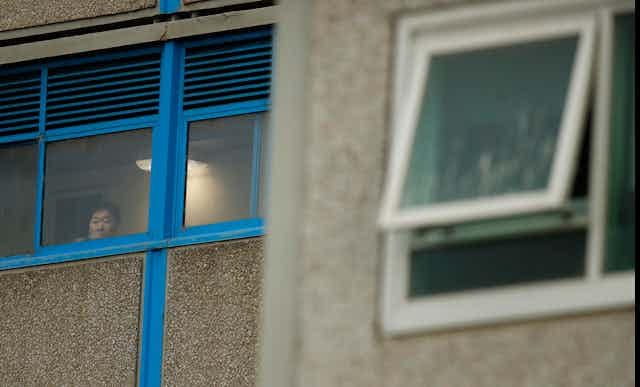The Victorian government’s decision to “close and contain” nine public housing towers in Flemington and North Melbourne represents a significant escalation in the fight against COVID-19. Under the stringent new rules, some 3,000 residents will be placed under “hard lockdown” and banned from leaving their homes for at least five days.
This move, announced by Premier Daniel Andrews on Saturday, also sees the Flemington and North Melbourne postcodes added to the ten already placed on stage 3 lockdown earlier in the week.
The latest response follows the identification of 108 new cases in Victoria on Saturday – the second-highest daily count in Victoria since the pandemic began. Of these new cases, 23 were from 12 households in these housing estates.
Read more: These 10 postcodes are back in Stage 3 coronavirus lockdown. Here's what that means
There are many questions relating to this decision. But first we must acknowledge, as Housing Minister Richard Wynne already has, that “people living in these public housing towers are some of the most vulnerable people in our community”.
While it is vital for the wider Victorian public that the tower block residents follow the rules, they will also need support during the lockdown. Already there are reports the strong police presence is triggering fear, as well as concern about further employment loss and financial stress.
It is vital close health and welfare supervision is provided, and all standard requirements for normal daily living delivered to their door. The government has waived residents’ rent for the next two weeks, and promised hardship payments of A$1,500 to residents forced to miss work and A$750 to those without employment.

The “close and contain” strategy is fundamental in outbreak control. Restricting residents’ movement aims to prevent further spread of the virus by sealing off known hotspot sites for the duration of the coronavirus’s incubation period.
The strategy is similar to that used in aged care facilities with reasonable success, and Andrews has refused to rule out further hard lockdowns in other sites with significant COVID-19 clusters.
Read more: Victoria locks down 36 Melbourne suburbs to try to control COVID-19 spike
Will the hard lockdown be successful in containing the virus? We know the SARS-CoV-2 coronavirus, which causes COVID-19, is spread via close contact with droplets from an infected person, or by touching contaminated surfaces. Physical distancing, good hygiene, avoiding large gatherings, and isolation are the best defences.
Housing estates are characterised by their close confines and shared community spaces. Furthermore, Victorian Public Tenants Association executive officer Mark Feenane has acknowledged that “overcrowded living conditions” would assist the spread of the virus. Sadly, conditions in these tower blocks are ripe for spreading COVID-19.

Its not hard to do the maths. In an uncontrolled outbreak with a reported reproductive rate (the number of new cases spawned by each known case) of around 2, and cases doubling every four days, it is easy to see how 23 cases in 12 homes could rapidly escalate to hundreds or thousands if no action is taken. So the action to “close and contain” and test all residents is a sensible and necessary move.
The next move will depend on the test results and the number of further cases during the five-day hard lockdown. Unfortunately it is hard to say with confidence how many new cases may be identified.
So what happens next? Today (Sunday) there were 74 newly discovered cases in Victoria. Of these, four are residents of the towers. Across the state there are 543 active cases, and thousands of close contacts of those cases are in isolation while they await the results.
As Andrews has warned, further postcode lockdowns may be inevitable. What is uncertain is how many postcode lockdowns would have to occur before the decision is made to reinstate stage 3 restrictions across the entire state.
Read more: Lockdown returns: how far can coronavirus measures go before they infringe on human rights?
For those Victorians not in lockdown, the message has never been clearer. Stay at home if you are unwell, get tested if you have symptoms, maintain physical distancing, and practise good hand hygiene.
The nine tower blocks are currently the focal point, but all Victorians have a role to play.

